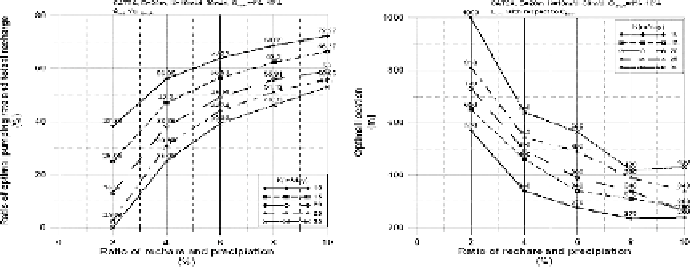Geoscience Reference
In-Depth Information
Fig. 5. Optimal pumping rates and optimal well locations versus the recharge rate with
various hydraulic conductivities.
sensitive in high recharge rate regions than low recharge rate regions and
moves toward coastline according to the increase of the recharge rate.
2.3.
Sensitivity analysis for the optimal pumping rate and
well location
Sensitivities of both the optimal pumping rate and the optimal well loca-
tions are investigated with respect to changes in the recharge rates with
various hydraulic conductivities (Fig. 5). The shape of the optimal pump-
ing rate curve is similar to that in Fig. 4. However, the optimal pumping
rate is higher than the results presented in Fig. 2. That is to say, simul-
taneous consideration of the optimal pumping rate and the optimal well
location can yield more groundwater.
3. Results and Conclusions
The optimal pumping rate decreases with respect to the increases in
hydraulic conductivity. Meanwhile, the relationship between the optimal
pumping rate and the recharge rate differs depending on the hydraulic con-
ductivity. The relationship is curvilinear in low-conductive aquifers, but
becomes linear in highly conductive aquifers. The optimal pumping rate
is more sensitive to hydraulic conductivity in low recharge regions. The
aquifer thickness does not affect the optimal pumping rates. Optimal well
locations change quickly inland depending on the increase of hydraulic con-
ductivity and are more sensitive to hydraulic conductivities than recharge
rates.










